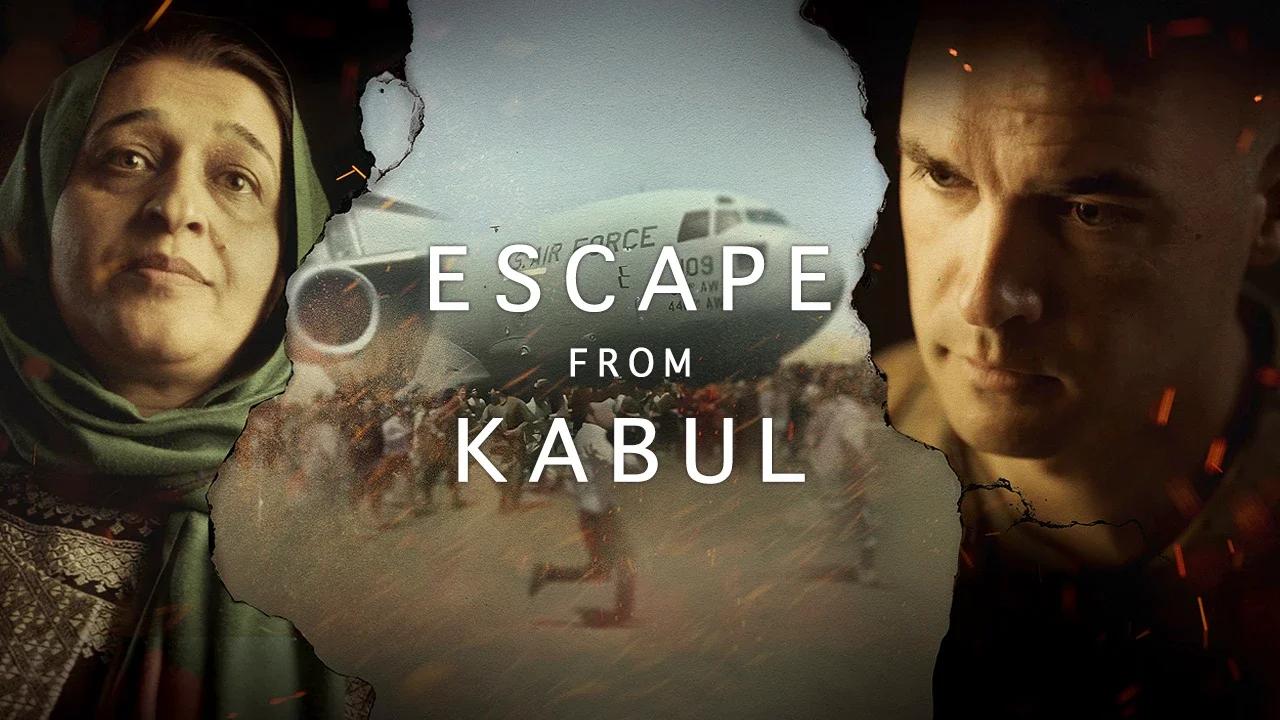This documentary from Jamie Roberts on the evacuation of the airport at Kabul in August 2021 feels more like a lengthy news segment.
Airing on HBO a little more than a year after the American withdrawal from Afghanistan, “Escape From Kabul” presents a detailed account of the chaotic evacuation at the Kabul airport in August 2021.
Directed by Jamie Roberts, whose “Four Hours at the Capitol” premiered just nine months after the Capitol riot, “Escape From Kabul” in some ways feels more like a lengthy news segment than a feature documentary.
The stories — and types of footage — will be familiar to anyone who sat glued to the television that August. We hear from Marines who were at the airport; from Afghans who got out and who didn’t; and from Taliban members who moved on Kabul. At least one acts surprised that women and children might be terrified of their arrival.
There is talk of the crushing size of the crowds and the squalid conditions at the airport. Lt. Col. Christopher R. Richardella describes logistical difficulties at various stages. Staff Sgt. Maria G. Solis explains how eerily normal it became for American troops to be passed babies by women trying to escape. Afghans like Hasina Safi, then the country’s acting minister for women’s affairs, and Malalai Hussainy, a first-year university student at the time, discuss their fears of brutality and a lack of education for women under Taliban leadership.
The movie lays out a clear timeline and is good at conveying the conflicted feelings that Afghans had about leaving their homes and that American troops had as they tried to maintain control of the situation. Still, “Escape From Kabul” is a short-term recap. A more robust movie, following these witnesses over several years, is still waiting to be made.
https://odysee.com/@Documentary-Archive:0/Escape-From-Kabul-2022:b?r=7eNr6s5Zv53V9JtaUGvJfSAidoZ9Xnmx&lid=92ce9798ddb849bfc284b6595efb48c85fda17bc
This documentary about Sgt Pepper’s Lonely Hearts Club Band picks up where Ron Howard left off – without any of the band’s music or even images
It’s not easy to make a documentary about the greatest album in history when you don’t have access to a single note of the music, but this documentary forges on and cashes in regardless, perhaps assuming its target audience already knows the band’s back catalogue (or won’t realise there’s no Beatles music in it). It cannily picks up the story where last year’s “official” doc – Ron Howard’s Eight Days a Week – left off: the pivotal year of 1967, when the band gave up touring, recorded Sgt Pepper and met the Maharishi.
This history is raked over by greying, second-tier talking heads in granular detail, right down to the design of the “get well soon” card John Lennon drew for George Harrison’s sister-in-law. But without the supporting music, or even images, there’s a dancing-about-architecture feel to the whole exercise....

The Hollywood Vampires take their name from an all-star social club that drank itself to oblivion during the mid 1970s at the Rainbow Bar and Grill on The Sunset Strip. The 2019 documentary The Rainbow chronicles the restaurant’s place in the Los Angeles music scene and is an engaging profile of the family that’s run it for three generations (that is, when it’s not indulging in lazy nostalgia). Directed by Zak Knutson, it is currently streaming on Amazon Prime.
Since opening in 1972, the Rainbow has offered food and drinks to successive generations of rockers. Located in West Hollywood, betwixt a cluster of music venues, it was popular with bands visiting Los Angeles as well as those living and trying to make it in the City of Angels. Besides the Hollywood Vampires – which included Alice Cooper, a couple Beatles and riotous Who drummer Keith Moon, Led Zeppelin picked up groupies there, The Runaways ate there and a teenage Slash snuck in dressed as a woman. Motörhead’s Lemmy ...

The 1991 documentary of the making of Blood Sugar Sex Magik, the Red Hot Chili Peppers' album that undoubtedly broke them through to the mainstream proper with the crossover hit, "Under the Bridge."
When I originally saw the film in the mid-90s, I was astounded at the recording process — with a much younger Rick Rubin and engineer Brendan O'Brien (before he became a household name producer himself with Pearl Jam, Rage Against the Machine, Soundgarden, etc.), and made in a house, the supposedly haunted The Mansion (which Rubin now owns).
It shows a much younger band — there's a lot of serious talk mixed in with their own brand of sexual juvenility.
What's interesting is seeing the brief moments of interplay amongst the Peppers. John Frusciante before his descent into his hell of drugs and madness and his subsequent return to the fold. Kiedis mixing his own sense of the world from the brotherhood he feels with the ...














